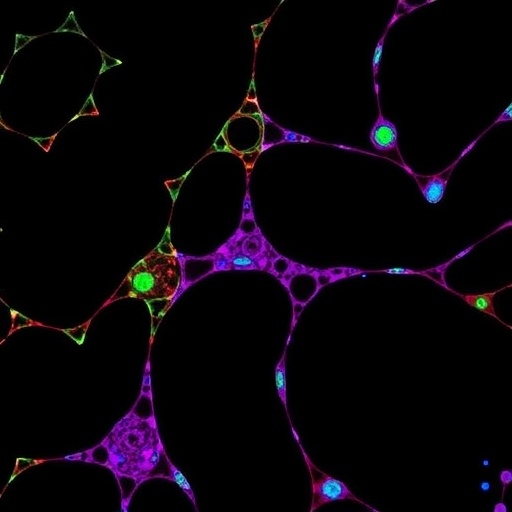In the ever-evolving field of neonatology, the management of preterm neonates has emerged as a critical area of focus, particularly considering the unique challenges they face. A recent study published in BMC Pediatrics by Wagenaar, Broekhoven, and Franx, sheds light on a groundbreaking development in this area: the creation and internal validation of a clinical prediction model. This model aims to determine the appropriate level of care required for preterm infants, a significant advancement that could transform clinical practices and enhance patient outcomes.
Preterm birth complications can lead to a myriad of challenges, from respiratory distress to long-term neurological issues. The decision regarding the optimal level of care for these vulnerable infants often rests upon the clinical judgment of healthcare providers, which can vary considerably. Each infant’s clinical condition, gestational age, and associated risk factors contribute to the complexity of this assessment. The introduction of a clinical prediction model stands to standardize these evaluations, reducing variability in care and ultimately improving outcomes for these tiny patients.
The development of the clinical prediction model was meticulously carried out, following a robust methodological framework. Data were collected from a diverse cohort of preterm neonates, allowing for a thorough analysis of various clinical parameters. Important metrics such as birth weight, gestational age, and clinical presentations were considered. The model integrates these variables to generate a reliable prediction of the needed level of care, thus providing clinicians with a powerful tool to aid in their decision-making.
One of the notable aspects of the model is its internal validation, which is essential to assess its predictive accuracy and reliability. By testing the model against a subset of the original data, the researchers were able to confirm that it could reliably predict outcomes in preterm neonates. This step is critical because it provides evidence that the model can be trusted to assist healthcare professionals in real-world settings, where decisions can have life-altering consequences for the newborns.
Furthermore, the researchers acknowledge the limitations of their study and the ongoing need for external validation. While internal validation provides a strong foundation, applying the model in different clinical settings and populations will be crucial for its broader applicability. This type of comprehensive validation is necessary to ensure that the model retains its accuracy across various institutions and diverse patient groups, ultimately leading to widespread adoption in clinical practice.
This predictive model not only holds promise for addressing immediate care needs but also has the potential for long-term implications in neonatal health. By accurately stratifying risk, healthcare providers can tailor interventions based on the anticipated needs of each infant, potentially leading to improved neonatal outcomes over time. From reducing unnecessary interventions to ensuring that high-risk infants receive the enhanced care they require, the practical applications of this model could be far-reaching.
The significance of early and accurate care for preterm neonates cannot be overstated. Studies have shown that timely interventions can minimize complications and promote healthier developmental trajectories. As such, the adoption of evidence-based tools like this clinical prediction model could fundamentally alter the landscape of neonatal care, making it more responsive and individualized.
In addition to its emphasis on clinical application, the study also highlights the importance of interdisciplinary collaboration in advancing neonatal care. The development of such predictive models requires not only the expertise of neonatologists but also collaboration with data scientists, statisticians, and other relevant stakeholders. This collaborative approach underscores the necessity for a multifaceted perspective when tackling the complexities of neonatal health challenges.
Moreover, the study advocates for continuous research and innovation in the field of neonatology. As medical science progresses, it is imperative that new findings be incorporated into clinical practice. This is where the synergy between clinical practitioners and researchers can lead to the adoption of cutting-edge technologies and methodologies that can further enhance the care provided to preterm infants.
This research aligns with a growing body of literature focused on improving outcomes for preterm neonates through data-driven approaches. As healthcare becomes increasingly reliant on evidence-based practices, the role of predictive modeling in clinical decision-making is likely to expand. The findings of Wagenaar et al. may serve as a catalyst for similar research initiatives, leading to the development of additional models that can address various aspects of neonatal care.
In summary, the recent study on the clinical prediction model for preterm neonates marks a significant advancement in the field of neonatology. By offering a systematic approach to evaluating the necessary level of care for these infants, the model stands poised to improve clinical decision-making and outcomes. As healthcare providers continue to navigate the challenges associated with preterm births, the incorporation of predictive analytics will undoubtedly play a pivotal role in shaping the future of neonatal care.
It will be crucial for clinicians to embrace these innovations, balancing the integration of predictive models with their clinical expertise to ensure the best possible outcomes for their patients. As the neonatal community rallies behind evidence-based practice, the impact of this research will resonate for years to come, ultimately leading to healthier pathways for preterm neonates.
Subject of Research: Neonatal care prediction model for preterm infants.
Article Title: Development and internal validation of a clinical prediction model for the needed level of care in preterm neonates.
Article References: Wagenaar, J.H.L., Broekhoven, M., Franx, A. et al. Development and internal validation of a clinical prediction model for the needed level of care in preterm neonates. BMC Pediatr 25, 956 (2025). https://doi.org/10.1186/s12887-025-06316-x
Image Credits: AI Generated
DOI: https://doi.org/10.1186/s12887-025-06316-x
Keywords: Clinical prediction model, preterm neonates, neonatal care, healthcare outcomes, evidence-based practice.
Tags: BMC Pediatrics study on neonatologyclinical prediction model for neonatesgestational age impact on carehealthcare provider decision-making in neonatologyimproving outcomes in neonatologyinternal validation of clinical modelslong-term neurological issues in preterm infantsmanaging preterm infants challengesneonatal respiratory distress complicationsoptimizing care for preterm babiespreterm neonates care needs predictionvariability in neonatal care decisions





